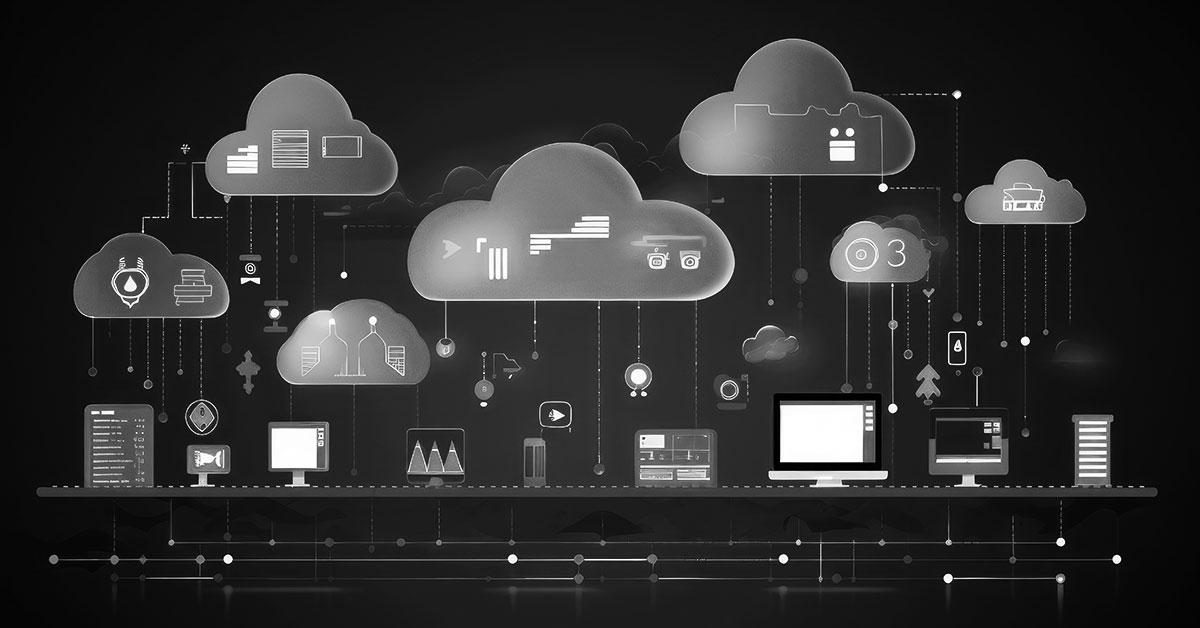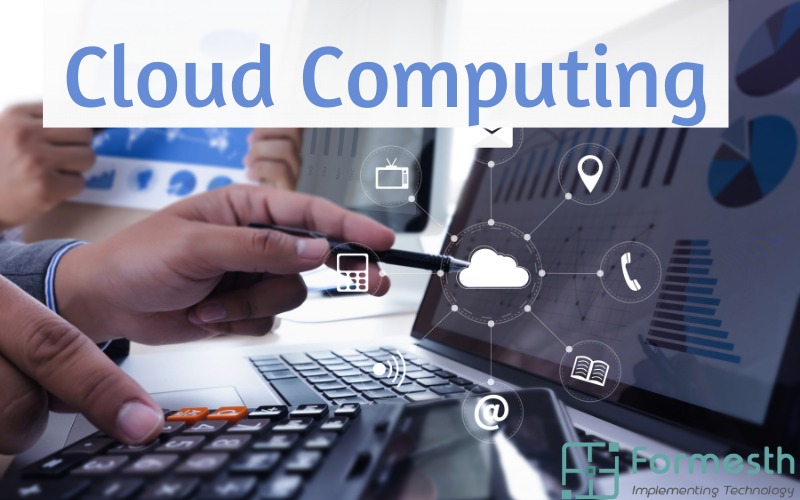Welcome to our comprehensive guide on cloud computing, where we will explore everything you need to know to navigate the cloud with confidence. Whether you’re new to cloud computing or looking to enhance your existing cloud infrastructure, this guide will provide you with valuable insights and best practices.
In this guide, we will cover a wide range of topics, including:
- Understanding different cloud computing solutions
- Strategies for cloud migration
- Managing cloud infrastructure
- Ensuring cloud security best practices
- Embracing cloud technology trends and innovations
Throughout this journey, we’ll discuss cloud computing solutions and provide you with insights into the benefits and considerations of each option. We’ll also explore effective cloud migration strategies to minimize disruptions and maximize the benefits of transitioning your applications and data to the cloud.
Furthermore, we’ll delve into essential considerations for managing cloud infrastructure, such as provisioning resources, monitoring performance, and implementing automation. You’ll learn how to optimize your infrastructure for optimal performance and scalability.
Security is a top concern in the cloud environment, which is why we’ll dive into cloud security best practices. From data encryption and access controls to threat detection and risk management, we’ll provide you with the knowledge to protect your sensitive information.
Lastly, we’ll explore the latest cloud technology trends and innovations. Stay up-to-date with edge computing, serverless architecture, artificial intelligence, and more. Discover how these technologies can enhance your cloud environment and propel your organization forward.
Throughout this guide, we’ll also discuss different cloud deployment options, cloud service providers, cloud architecture design, and cloud cost optimization techniques to help you make informed decisions and maximize the value of your cloud investments.
So buckle up and get ready to embark on a cloud computing adventure. Let’s start navigating the cloud!
Understanding Cloud Computing Solutions
In today’s rapidly evolving digital landscape, cloud computing solutions have emerged as a game-changer for businesses of all sizes. The ability to store, access, and manage data and applications remotely has revolutionized the way organizations operate. In this section, we will explore the different types of cloud computing solutions available in the market, equipping you with the knowledge needed to make informed decisions about your organization’s cloud strategy.
There are primarily three types of cloud computing solutions:
- Public Cloud: This type of cloud computing solution is provided by third-party service providers and is accessible to the general public over the internet. Public clouds offer scalability, cost savings, and flexibility, making them an ideal choice for startups, small businesses, and organizations with dynamic workloads. Some popular public cloud providers include Amazon Web Services (AWS), Microsoft Azure, and Google Cloud Platform.
- Private Cloud: Private cloud solutions are dedicated to a single organization and are hosted either internally, within the organization’s premises, or externally, by a third-party vendor. Private clouds provide enhanced control, security, and customization options, making them suitable for industries with stringent compliance requirements such as finance, healthcare, and government sectors.
- Hybrid Cloud: Hybrid cloud solutions combine the best of both public and private cloud environments. Organizations can leverage the scalability and cost-effectiveness of public clouds for non-sensitive workloads while keeping critical data and applications secured within a private cloud. Hybrid clouds offer increased flexibility, allowing businesses to optimize their infrastructure based on workload demands and regulatory compliance.
Each type of cloud computing solution has its own set of benefits and considerations. By understanding the differences between public, private, and hybrid clouds, you can tailor your cloud strategy to align with your organization’s specific needs and objectives.

Strategies for Cloud Migration
In this section, we will explore the key strategies and best practices for successfully migrating your applications and data to the cloud. Cloud migration can be a complex process, but with the right approach, you can minimize disruptions and maximize the benefits of transitioning to the cloud.
There are different migration approaches to consider, depending on your organization’s specific needs and requirements. One common method is the “lift and shift” approach, which involves moving your existing applications and data to the cloud without making significant changes to their architecture. This approach is relatively quick and straightforward, allowing for a seamless transition.
Alternatively, you may opt for a more advanced strategy known as the re-architecting approach. With this method, you have the opportunity to optimize your applications for the cloud by redesigning and rebuilding them to fully leverage the benefits of cloud infrastructure and services. This approach requires more time and resources but can result in enhanced scalability, performance, and cost-effectiveness in the long run.
Approaches for Cloud Transition
To ensure a smooth migration process, it is crucial to plan and prepare thoroughly. Start by assessing your current IT infrastructure and identifying which applications and data are suitable for migration. Prioritize your migration efforts based on business objectives and criticality. Develop a detailed migration plan that includes timelines, resource allocation, and contingency measures.
Consider the dependencies and dependencies of your applications and data, as well as any potential compatibility issues with the cloud environment. It is essential to carefully evaluate your chosen cloud service provider’s capabilities and ensure that they align with your migration goals.
Throughout the migration process, communication and collaboration are key. Involve all relevant stakeholders and keep them informed about the progress and impact of the migration. Establish clear channels of communication and address any concerns or challenges promptly.
Finally, after the migration is completed, perform thorough testing and validation to ensure that your applications and data are functioning correctly in the cloud environment. Monitor the performance and make necessary adjustments to optimize resource utilization and cost efficiency.
By following these cloud migration strategies and best practices, you can effectively navigate the migration process and unlock the full potential of cloud computing for your organization.
Managing Cloud Infrastructure
Managing cloud infrastructure is a critical aspect of ensuring optimal performance and scalability for your organization. Effective cloud infrastructure management involves strategic provisioning of resources, continuous performance monitoring, and the implementation of automation to streamline operations and enhance productivity. In this section, we will delve into the essential considerations and techniques for managing cloud infrastructure.
Provisioning Resources
Properly provisioning resources is crucial for meeting the demands of your applications and services hosted in the cloud. It involves allocating the right amount of computing power, storage, and network resources to ensure optimal performance and cost-effectiveness. Whether you are scaling up or down, cloud infrastructure management allows you to dynamically adjust resource allocation based on real-time demands.
Monitoring Performance
Monitoring the performance of your cloud infrastructure is vital for identifying bottlenecks, optimizing resource usage, and ensuring service availability. By leveraging monitoring tools and techniques, you can gain valuable insights into the health and performance of your cloud environment. Real-time monitoring allows you to proactively detect and resolve issues, ensuring consistent and reliable performance.
Implementing Automation
Automation plays a pivotal role in cloud infrastructure management, enabling you to streamline operations, reduce manual efforts, and enhance efficiency. By automating repetitive tasks and workflows, you can accelerate deployment, provisioning, and configuration processes. Automation also facilitates scalability, allowing you to easily scale resources up or down based on workload fluctuations.
“Cloud infrastructure management allows organizations to leverage the power of automation to optimize resource allocation and enhance operational efficiency.”
To effectively manage your cloud infrastructure, it is essential to leverage cloud management tools and techniques. These tools provide a centralized platform for monitoring and managing various aspects of your cloud environment, including resource provisioning, performance monitoring, and automation. With the right cloud management tools, you can gain better control over your infrastructure, streamline operations, and improve overall productivity.
By adopting best practices in cloud infrastructure management, your organization can unlock the full potential of cloud computing. Efficient resource provisioning, continuous performance monitoring, and strategic automation enable you to optimize your cloud infrastructure for enhanced scalability, cost-effectiveness, and operational efficiency.

By effectively managing your cloud infrastructure, you can optimize the performance, scalability, and efficiency of your cloud-based services and applications. Remember to consider resource provisioning, performance monitoring, and automation implementation as key pillars of your cloud infrastructure management strategy.
Embracing Cloud Technology Trends and Innovations
In the rapidly evolving world of cloud technology, staying up-to-date with the latest trends and innovations is essential for driving business growth and success. This final section explores some of the exciting trends that are shaping the future of cloud computing.
One of the trends gaining momentum is edge computing. With edge computing, data processing and storage are brought closer to the source, reducing latency and improving performance. This technology enables real-time data analysis and decision-making, making it ideal for applications such as Internet of Things (IoT), autonomous vehicles, and smart cities.
Another trend revolutionizing the cloud landscape is serverless architecture. With serverless computing, developers can focus on writing code without the need to manage underlying infrastructure. It offers scalability, cost efficiency, and increased productivity. As organizations strive for agility and innovation, serverless architecture provides the flexibility needed to meet evolving business demands.
Artificial intelligence (AI) is yet another trend reshaping cloud computing. AI-powered cloud services enable advanced data analysis, natural language processing, and machine learning capabilities. By leveraging AI, businesses can extract valuable insights from large datasets, automate processes, and improve decision-making.
Frequently Asked Questions
What is cloud computing Cloud Computing?
Cloud computing is a technology that allows users to access and use resources, data, and applications over the internet. Instead of relying on local servers or personal devices, cloud computing utilizes a network of remote servers hosted on the internet to store, manage, and process data. This enables organizations to scale their computing resources on-demand, increase storage capacity, and access their data and applications from anywhere with an internet connection.
How do I choose the right cloud computing solution for my organization?
When choosing a cloud computing solution. You need to consider several factors such as your organization’s specific needs, data security requirements, budget, and scalability requirements. Public clouds offer cost-effective and scalable solutions, while private clouds provide greater control and security. Hybrid clouds offer a combination of both. Assessing your requirements and consulting with cloud service providers can help you determine the most suitable solution for your organization.
What are some common cloud migration strategies Cloud Computing?
There are several cloud migration strategies available, including the “lift and shift” approach. Where applications are migrated as-is to the cloud without significant modifications. Another approach is the re-architecting strategy, which involves redesigning applications to leverage cloud-native capabilities for better performance and scalability. The right strategy depends on factors like the complexity of the application, budget, and required timeline for migration.
How can I effectively manage my cloud infrastructure?
Effective cloud infrastructure management involves implementing processes and tools to provision resources, monitor performance, and ensure security. It is important to have a well-defined governance framework, automate routine tasks, and regularly monitor resource utilization to optimize costs. Cloud management tools can help streamline these processes and provide insights into resource allocation and performance.
What are some best practices for cloud security Cloud Computing?
To ensure cloud security, it is crucial to encrypt data at rest and in transit. Implement strong access controls, and regularly update and patch your systems. Employing multi-factor authentication, conducting regular security audits, and having a disaster recovery plan in place are also important.
What are some emerging trends in cloud technology Cloud Computing?
Cloud technology is constantly evolving, and some emerging trends include edge computing. Which brings compute resources closer to the data source for reduced latency, serverless architecture. Which allows developers to focus solely on writing code without managing underlying infrastructure, and the integration of artificial intelligence and machine learning capabilities into cloud services. Staying informed about these trends can help organizations leverage the latest technologies to enhance their cloud environments.
For more informations : https://medium.com/@cloudlogically/navigating-the-cloud-a-comprehensive-guide-to-cloud-computing-services-109041ac20a5












